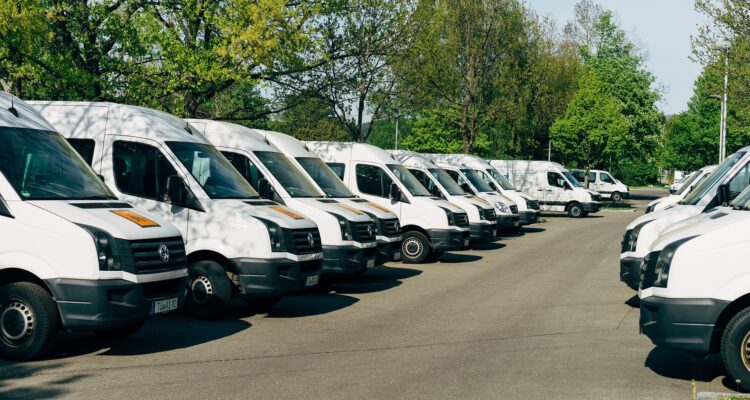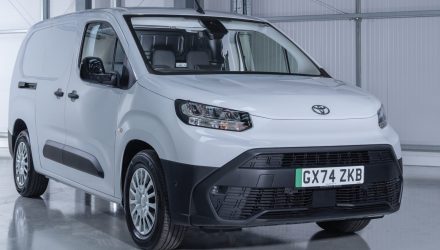The shift to electric vehicles across commercial fleets marks the biggest operational changes transport managers will tackle in the decades to come. It presents unique challenges, from home charging limitations to varying route requirements. And while the benefits of reducing tailpipe emissions and burnishing their sustainability credentials may help fleet operators win new business, many businesses face a complex journey in making this happen.
Adrian Brabazon, Head of bp Fleet Solutions looks in depth at the operational challenges facing the modern fleet and transport manager and looks at a few strategies that can be employed to make the role manageable.
Success comes not from rushing to replace everything at once, but through careful, evidence-based planning that recognises real-world constraints while embracing new possibilities. We’ve seen firsthand that the most successful fleet managers are taking a data-driven approach – starting with driver surveys, route analysis, and infrastructure assessments before making the switch.
Begin with your drivers and their lived experiences
It’s a cliché, but your people really are your best asset. Fleet electrification should start with those who know your vehicles inside out – your drivers. Their everyday routines offer vital insights. Though driver questionnaires might seem straightforward, they regularly uncover practical details that data analysis – which while very useful – might overlook.
While asking drivers to fill in a comprehensive survey might be a hard sell, this information can reveal hugely valuable insights about their daily mileage, overnight parking situations, and potential charging opportunities. This initial step is a crucial part of the planning phase, because so often it uncovers unforeseen challenges and opportunities.
Understand where change is realistic first, don’t go in all guns blazing
Every fleet runs differently but what we’ve seen is that thorough route examination can help fleet managers identify the most suitable vehicles for immediate electrification – those whose daily patterns already work well with today’s EV infrastructure and locations. The transition can’t happen overnight and there are some vehicles and operations which may need to remain petrol or diesel in the near term, until it is practical to make the transition.
By examining typical routes, stop frequency, and energy demands, you can prioritise vehicles where the business case for electrification is strongest. Many fleets find that while they can switch some of their vehicles immediately, with minimal operational changes, others require more planning and preparation to ensure the foundations are set first. There is no point having a brand new all-electric fleet if you can’t keep them on the roads.
Buying electric vehicles solves only half the challenge. The charging setup supporting these vehicles demands equally thorough consideration. Fleet managers must be confident that their sites’ power capacity, space limitations, and property lease terms are appropriate before investing in charging points. With commercial property agreements often lasting three to five years, the financial sums can become particularly tricky. If there are only three years remaining on the lease, then it may not make financial sense to install EV charging at that site.
A practical approach
We know from conversations with our partners that the upfront cost of deploying charging infrastructure is one of the most significant barriers to electrifying their fleet. We’ve worked hard to find a practical solution so we can support fleets navigating the transition. The Charging-as-a-Service (CaaS) model is helping overcome some of the hurdles, because it means that the cost of charging infrastructure is a predictable operational expense, rather than a capital investment. The CaaS model means the provider handles everything from site design and installation to ongoing operations and maintenance, while guaranteeing 99.9% charge readiness.
The mixed fleet reality
The most effective electrification strategies acknowledge that the transition period will involve running both electric and conventional vehicles. This blended approach allows organisations to gain hands-on experience with electric vehicles where suitable, while maintaining reliable service across their entire operation. By taking this measured, phased approach, fleet managers can progress sustainability aims without compromising the operational excellence their customers expect.
Fleet electrification offers more than just a different fuel source – it presents a chance to rethink fleet operations for better efficiency and sustainability. Organisations that tackle this transition thoughtfully, drawing on both internal knowledge and outside expertise, will not only meet compliance requirements but gain advantages in cost management, operational flexibility, and brand perception in an increasingly sustainability-aware and competitive market.








Suyog
( Wednesday, October 8, 2025 - 13:17 )
Good piece — it’s clear that the job of fleet managers is evolving fast, especially with electrification and data-driven choices in the mix. It’ll be interesting to see which strategies stick as real-world constraints keep coming into pla